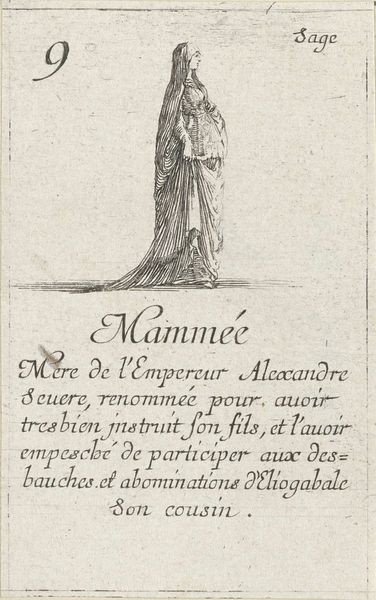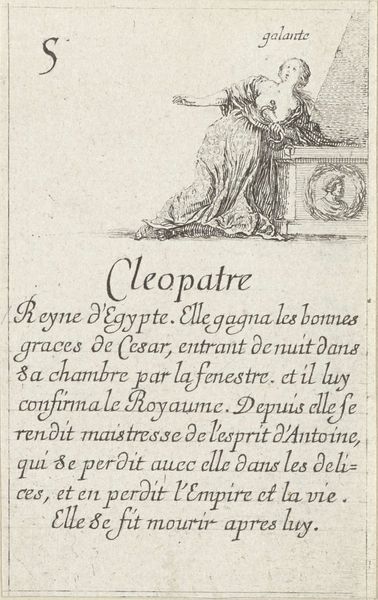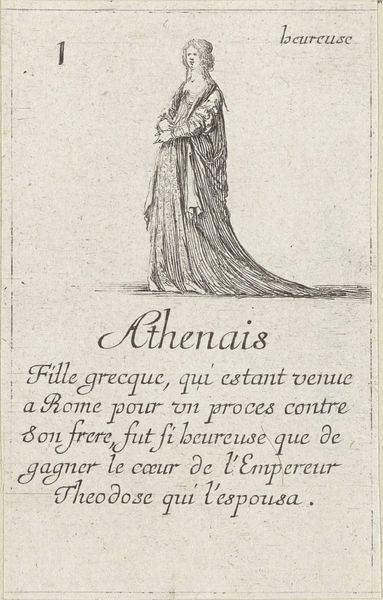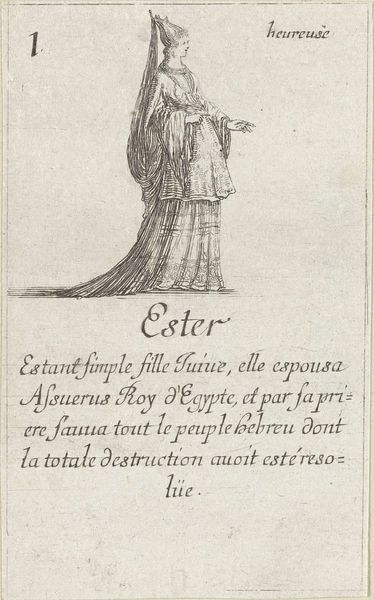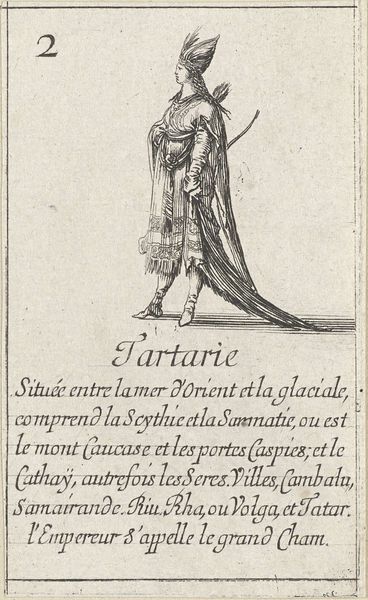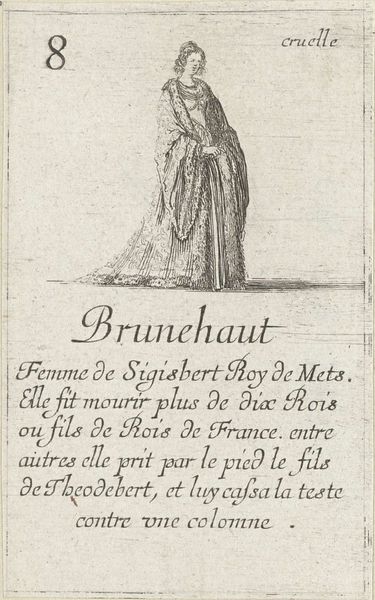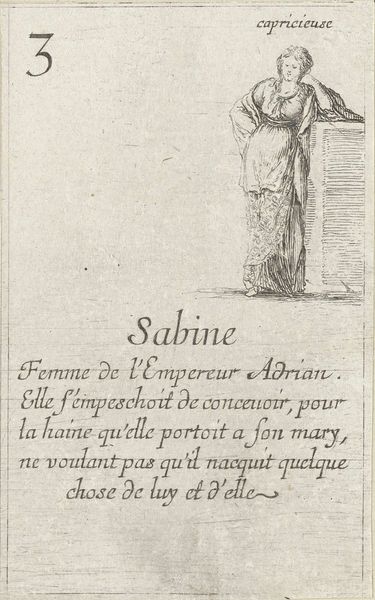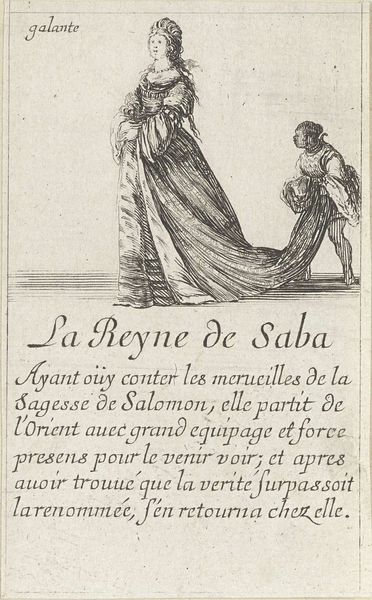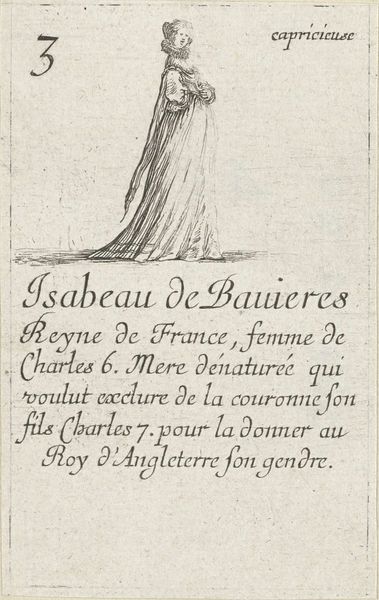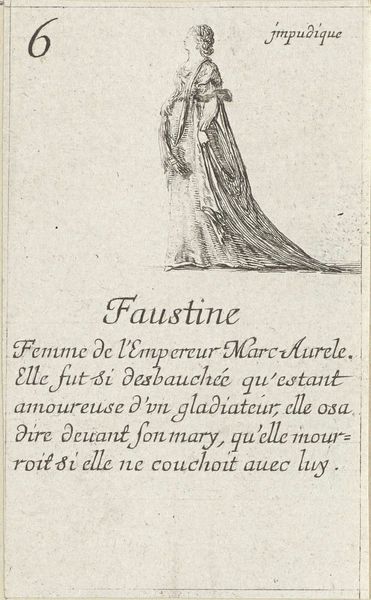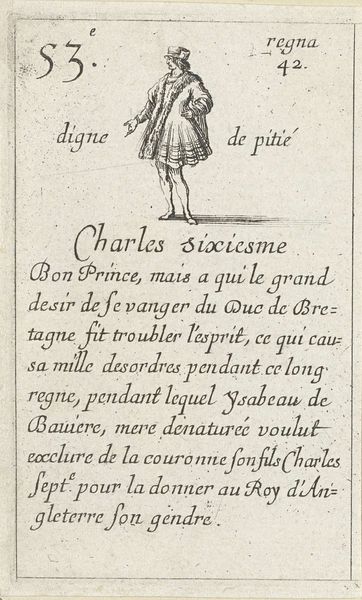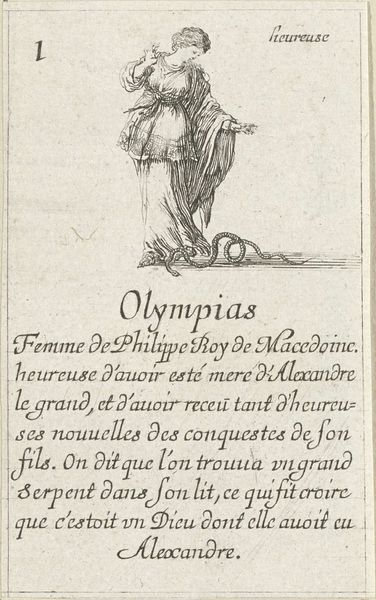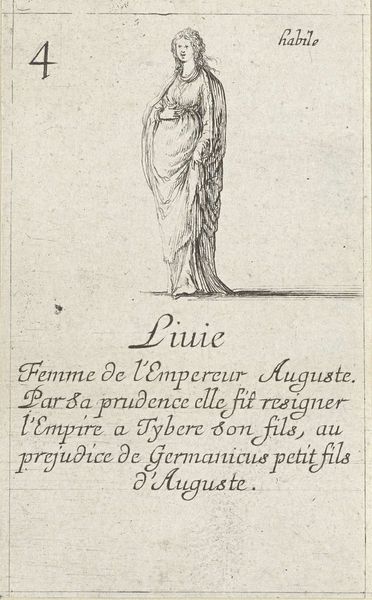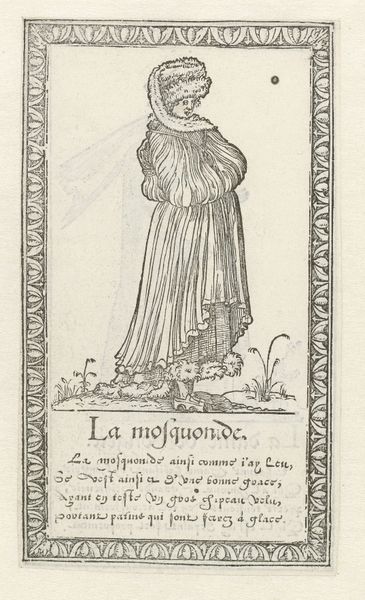
drawing, print, ink, engraving
#
portrait
#
drawing
#
baroque
# print
#
figuration
#
ink
#
pen-ink sketch
#
engraving
Dimensions: height 90 mm, width 55 mm
Copyright: Rijks Museum: Open Domain
Curator: Looking at this small portrait print, rendered with delicate pen and ink, one almost overlooks the complexities surrounding the figure it depicts: Johanna I of Naples. Created sometime between 1620 and 1664 by Stefano della Bella, it presents an interesting challenge to how we typically imagine queens. Editor: The stark lines and relatively small scale initially suggest a simple fashion plate. But there's an undeniable drama hinted at, something more complex than mere ornamentation. The way her robe seems to almost swallow her figure. What statement do you think it tries to make? Curator: That sense of drama is heightened by the original French text below which gives a decidedly less flattering account: Jeanne, Queen of Naples, it reads, was "very beautiful and loving her pleasures...she had several husbands whom she had killed one after the other as she grew tired of them.” A cautionary tale then. Editor: Ah, the text casts a long shadow! It complicates the otherwise graceful and stylish portrayal. We move away from elegance, as it speaks to issues of power, gender and narrative construction and the enduring trope of the femme fatale. One can only imagine how the early public received this dark insinuation. Curator: And that is precisely it: in representing historical figures, artists were always, at the same time, mediating and responding to the prevailing views of the time. Bella's print serves both as a depiction, and a form of judgment of the Queen. It seems her scandalous legend followed her throughout the ages. The added text seems to reinforce it. Editor: I find it fascinating to consider the layers of reception – from its creation within a specific cultural context, to our own interpretation colored by modern perspectives on power, gender and morality. Curator: Indeed. Even within the limitations of its medium and scale, it encourages us to look closer at the figures, both celebrated and notorious, who populate our collective cultural memory.
Comments
No comments
Be the first to comment and join the conversation on the ultimate creative platform.
